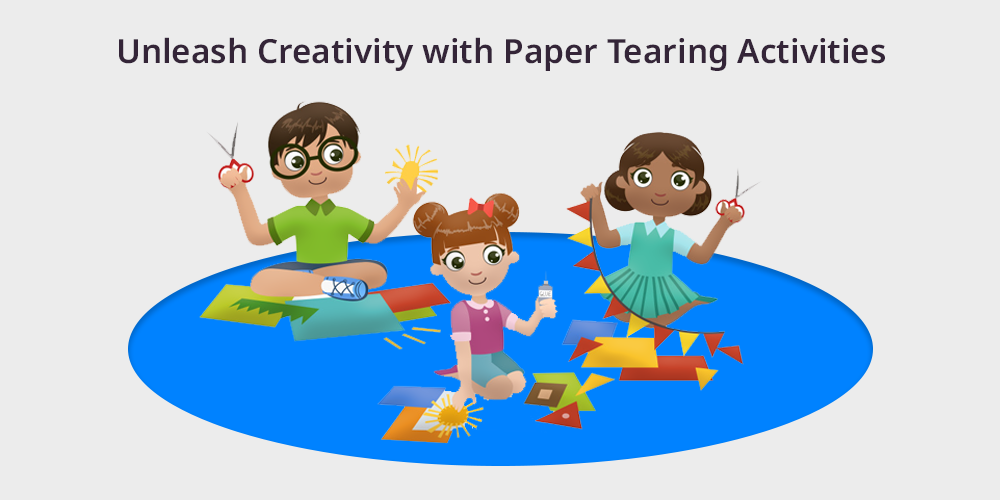
Paper tearing functions as an enduring hands-on activity which activates imagination thus becoming an excellent creative project for all age groups. Art creation through paper tearing provides a basic approach to make elegant artwork.
Paper tearing serves simultaneously as a stress-relieving activity and educational project which stimulates imagination among children.
The online learners, especially, can unlock the newest possibilities with the online group projects and these engaging activities.
The best part? Anyone regardless of age can easily access this activity because it needs minimal items.
Conduct a tour through various effective paper tearing activities designed to inspire your family members.
Contents
Ten Fun Activities Using Paper Tearing
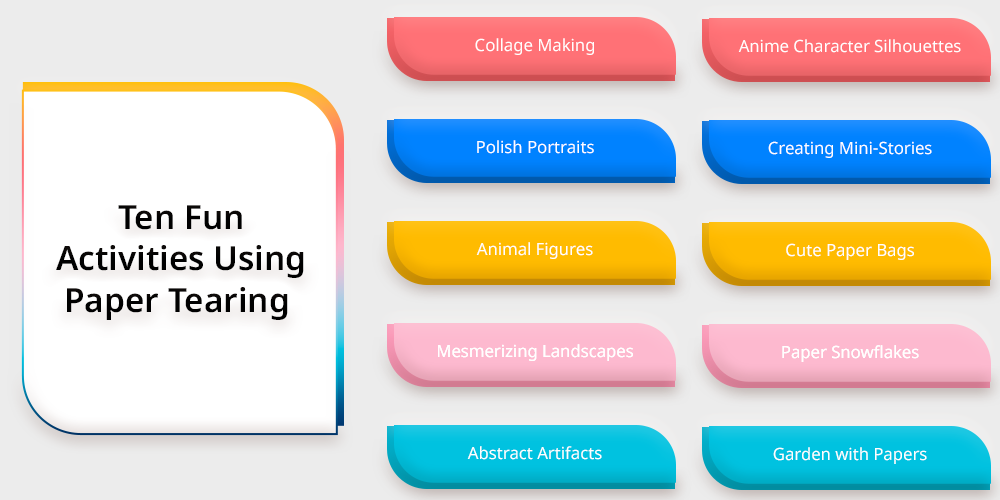
1. Collage Making
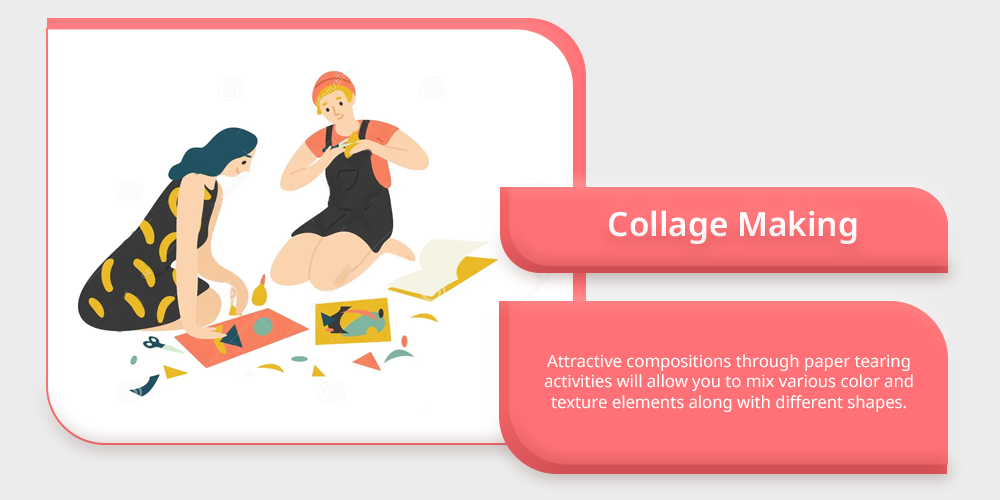
Attractive compositions through paper tearing activities will allow you to mix various color and texture elements along with different shapes.
You should tear paper to construct any kind of scenery from landscapes to portraits and abstract visuals.
Working with colored patterns in collage projects enables children to enhance their artistic sensibility and develop their tiny muscle capabilities.
- Gather these items: Newspapers, old magazines, fevicol (strong glue), coloured papers, cardboard, water paints, and brushes.
- Activity Guide: At first tear papers with different colours and textures. Keep a theme or portrait idea in front of you to take inspiration from. Start assembling the papers based on your imagination and then add colours and glue on it. Get the outcome of texture and scene as you wanted.
- Pro tips: Choose a single colour palette for defined and chic output. Add layers for growing depths in your collage.
Also read: 10 Essential Fine Motor Skills Activities for Young Learners
2. Polish Portraits
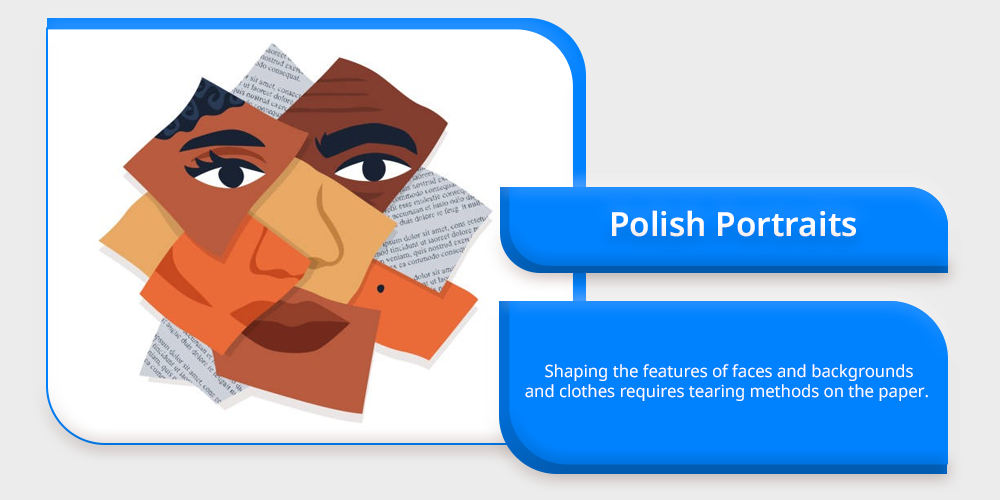
Utilize torn paper to produce advanced portrait designs. Shaping the features of faces and backgrounds and clothes requires tearing methods on the paper.
The practice enables people to develop skill at observing details along with improving their hand dexterity. Children can learn about shapes and ratios through this activity which serves as an effective learning method.
- Gather these items: Coloured papers with various skin tones, colour pencils, markers, glue, and a base.
- Activity Guide: First of all, make an outline for the portrait you want to make. Then, start tearing papers to glue it on the boundaries. Do the same for hair and clothes. Add details like eyes with the help of colored pencils.
- Pro tips: You can take reference through pictures or photos of people. Add layering for 3D effect.
3. Animal Figures
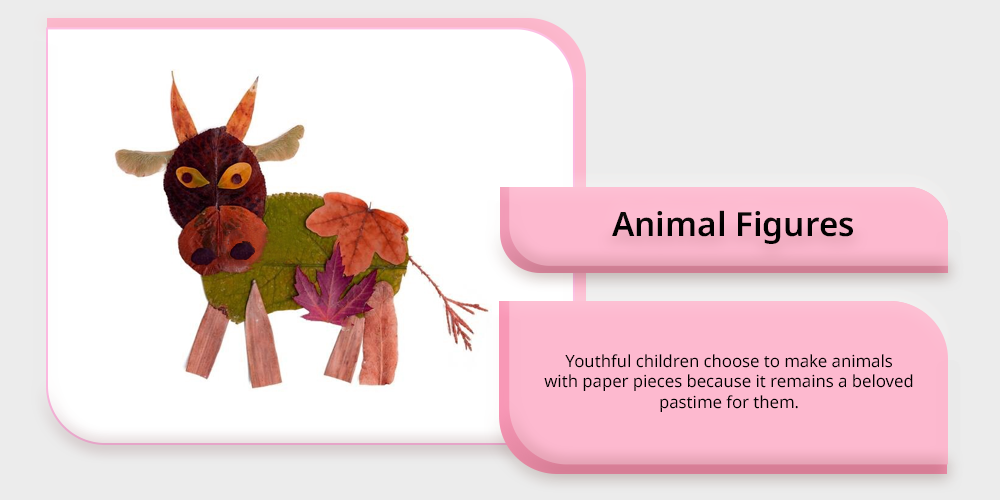
Youthful children choose to make animals with paper pieces because it remains a beloved pastime for them. Children learn to break pieces into different forms to produce different animals ranging from pets to rare safari animals.
The activity teaches animal knowledge to students while simultaneously fostering imagination, creative exploration of shape, and color variations.
- Gather these items: Colored papers of brown, black, white, and others (these colors resemble skin colors of most animals). Also, keep scissors and glue along with cardboard.
- Activity Guide: Fill the outlines of tails, horns, ears with correctly torn papers for the beginning. Then move on to the larger portions of the body like the trunk, stomach,etc. of the animals. Assemble everything accurately on the cardboard then glue it up.
- Pro tips: Utilize pictures of animals for reference. Also, if wanted, add a real 3D effect through multiple shades of colour and layers.
4. Mesmerizing Landscapes
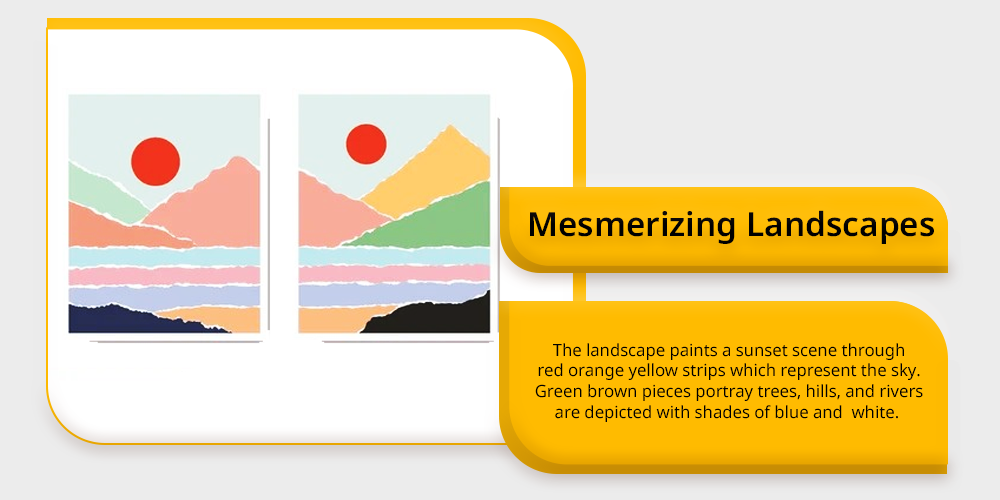
The creation of wonderful landscapes makes up one of the most performed paper tearing activities.
The landscape paints a sunset scene through red orange yellow strips which represent the sky. Green brown pieces portray trees, hills, and rivers are depicted with shades of blue and white.
Through this activity children learn environmental concepts while simultaneously developing their artistic understanding of natural elements.
- Gather these items: Nature-specific colored papers like green, orange, yellow, blue, white, and others. A canvas or a cardboard, and a glue.
- Activity Guide: Start with tearing papers of different colours. Draw a sketch for getting the boundaries perfectly on the canvas.
Then, paste the torn papers where they belong based on the part of nature you are covering. Add depth and real effect by adding texture and different shades of already used papers. Glue it all for the best outcome. - Pro tips: For natural texture add old used papers, or use cotton for making clouds look real.
5. Abstract Artifacts
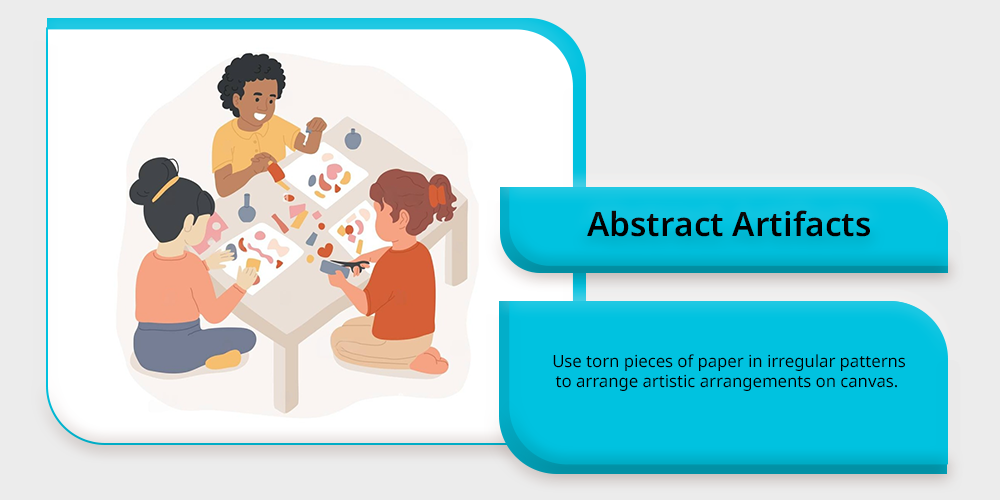
The key aspect of abstract art is creating without focus on exactness as it relies solely on artistic liberation. Use torn pieces of paper in irregular patterns to arrange artistic arrangements on canvas.
The paper-tearing creative exercise provides relaxation through mindful exploration of free expression. The activity increases mental freedom alongside abstract thought capabilities for better cognitive development of children.
- Gather these items: Several different colored papers like gold, silver, etc. especially with a lot of textures. Don’t forget a gum-tube, A4 sheets, or canvas.
- Activity Guide: Go with the flow and just tear paper as you like. Arrange every single piece in a way that makes sense to you in any way. Go in-depth and understand your imaginary vision of the product you want to present. Assemble everything on the canvas and stick it all.
- Pro tips: Mix contrast colors and textures for a moving effect in the picture.
6. Anime Character Silhouettes
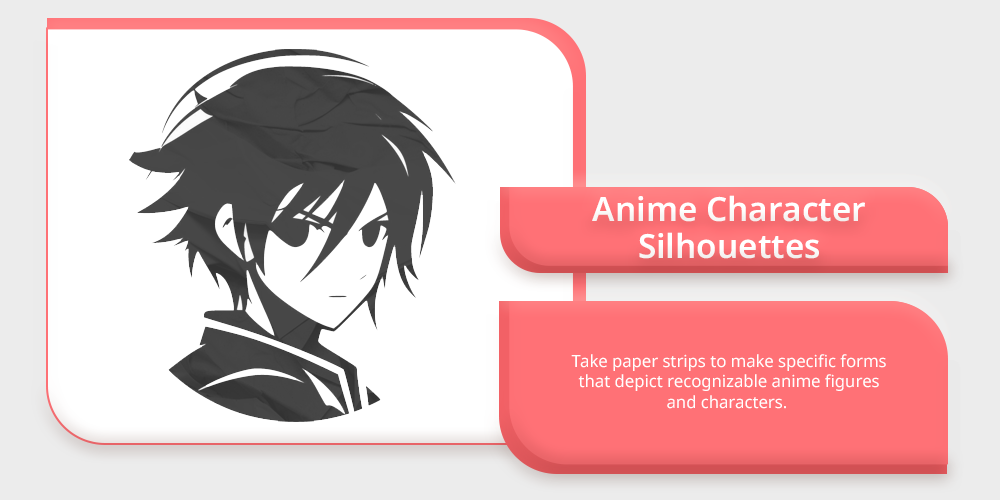
Many anime fans learn to bring their beloved characters into reality by tearing paper. Take paper strips to make specific forms that depict recognizable anime figures and characters.
The activity suits older children and adults who want to create memorable tributes reflecting their preferred anime dramas or personas.
- Gather these items: Black paper for silhouettes, scissors, coloured papers for background, and glue stick.
- Activity Guide: Cut out the black paper in the form of your favourite anime characters. And stick it on the colored backgrounds of your taste. You can add background texture, their famous dialogues, or eyes with the help of remaining papers or pencils.
- Pro tips: Be careful while tearing the papers in the form of your favourite characters. Or use scissors for fresh and clean cut-outs. Ask your parents if you are finding it difficult to use scissors.
7. Creating Mini-Stories
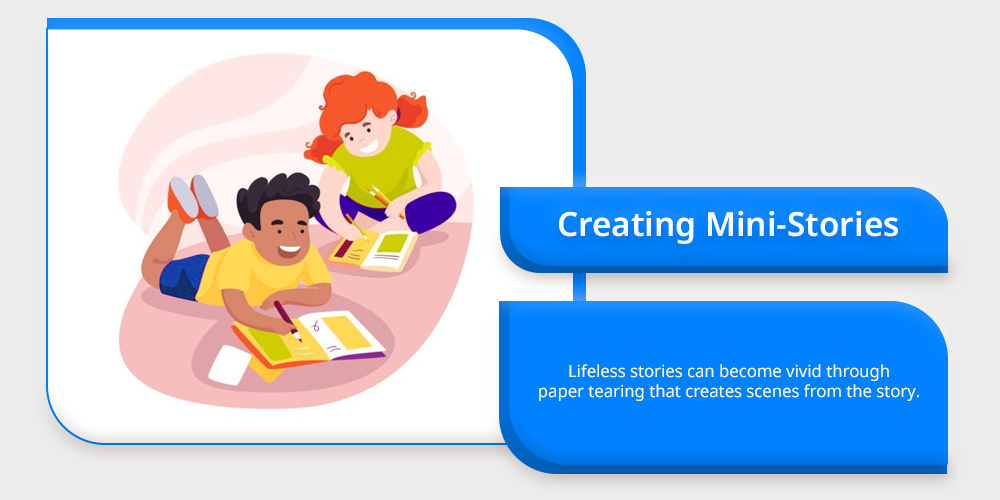
Lifeless stories can become vivid through paper tearing that creates scenes from the story. When creating your scene start by tearing paper to make elements like a character house, sky and trees.
Children finish their visual story by arranging all torn elements into their proper order. By tearing paper children enhance their storytelling capabilities while they explore different ways to structure their plots.
- Gather these items: White chart papers, colored scrapbook pages, pens, markers, a small notebook, or stapled pages.
- Activity Guide: Create a small story in your head. Visualize major picturesque incidents of the story. Then draw outlines for those pictures in the notebook.
Follow it by tearing papers for filling those drawings, and texture to the required areas of the scenes. Also, add required dialogues (small) for better understanding. Stick it all up and your own mini story is ready to be read. - Pro tips: Believe in your own story and then begin the work. Motivate students to share their work and views in the class.
Also, learn to Create A Birthday Project In Scratch to surprise your peers and teachers with your artistic skills.
8. Cute Paper Bags
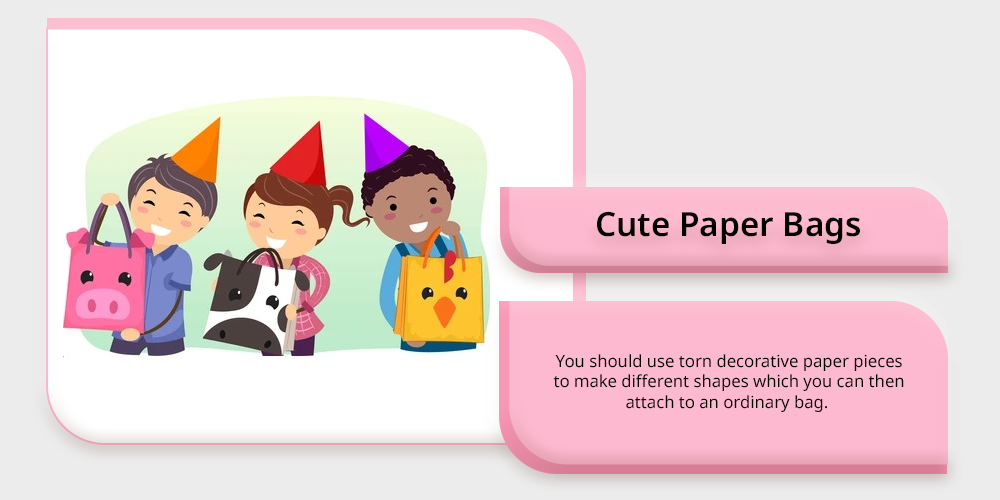
Novelty paper creations using torn papers offer kids an entertaining approach to design their own customized gift bags. You should use torn decorative paper pieces to make different shapes which you can then attach to an ordinary bag.
This simple project allows children to personalize regular objects with their artistic talent while creating useful items through a creative process.
- Gather these items: Hand-made papers with beautiful textures, glue, scissors, a tote bag, markers, and pens.
- Activity Guide: Take a tote bag and draw an outline on it for the picture of what you have in your mind. Then, cut papers with different shapes and sizes to match your imagination. Put together everything and add glue to it for adhesiveness.
- Pro tips: Make sure to get a tote bag with light colour and plane background. You can further add glitters, and buttons to get that extra surprise factor.
Take time to read Creative Activities for Kids to articulate artistic features in your child’s learning.
9. Paper Snowflakes
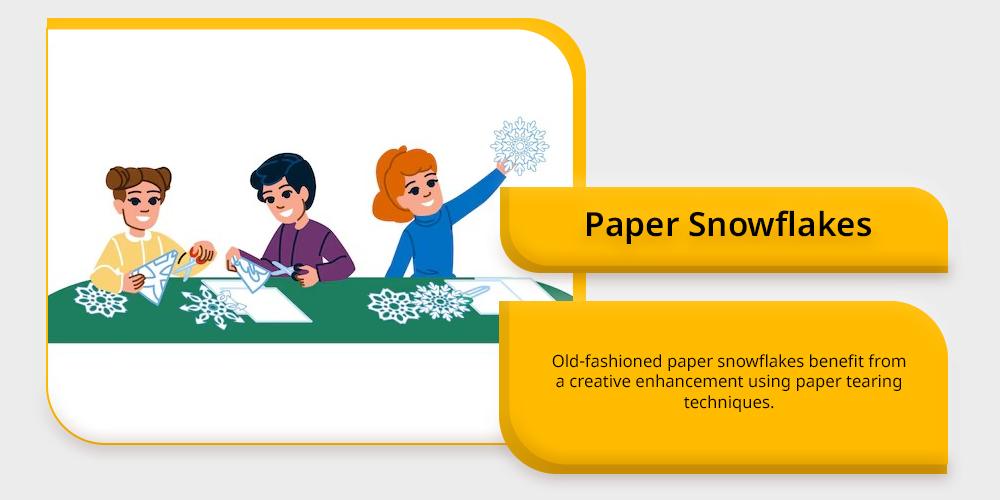
Old-fashioned paper snowflakes benefit from a creative enhancement using paper tearing techniques. Form lovely snowflakes by tearing pieces from the paper rather than cutting it.
Use of paper snowflakes gives children an excellent chance to build their fine motor abilities. These are such activities that focus on shape accuracy and symmetry development.
- Gather these items: White coloured papers, cotton, glue, glitters, and scissors.
- Activity Guide: Begin your task of snowflake making with folding white papers in the shape of squares or triangles. Then, cut out the papers in the desired shapes. Unfold the papers to get your snowflakes.
- Pro tips: Add glitters to the snowflakes for added texture and beauty. Ask your parents for guidance while using scissors for sharp cuts in the papers.
10. Garden with Papers
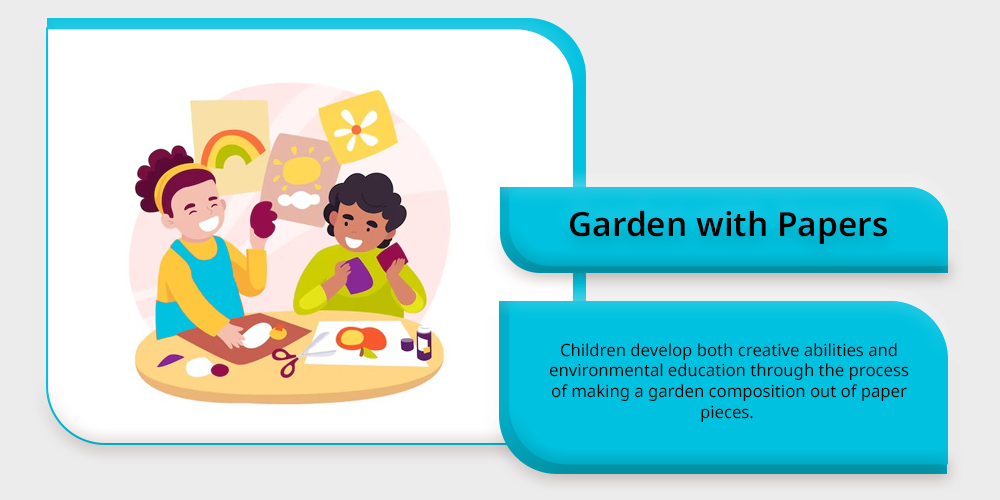
Students will find pleasure through the creation of natural elements from torn paper pieces. Children develop both creative abilities and environmental education through the process of making a garden composition out of paper pieces.
Different floral types and bushy elements need unique colorful paper pieces.
- Gather these items: Take vibrant colored papers along with brown, and green ones. Assemble fevi-gum, scissors, etc. too.
- Activity Guide: Start tearing paper in the shapes of flowers, leaves, butterflies, and other elements of a garden. Fix it all in place with the help of adhesive.
Add texture with glitters and smaller pieces of papers. Put everything on the cardboard and enjoy the view of your artificial garden. - Pro tips: Add your preferred flowers and insects to make it look real. Also, use straws for giving texture to the antennae of butterflies.
Acquire Cool Materials to Support Paper Tearing Learning Activities
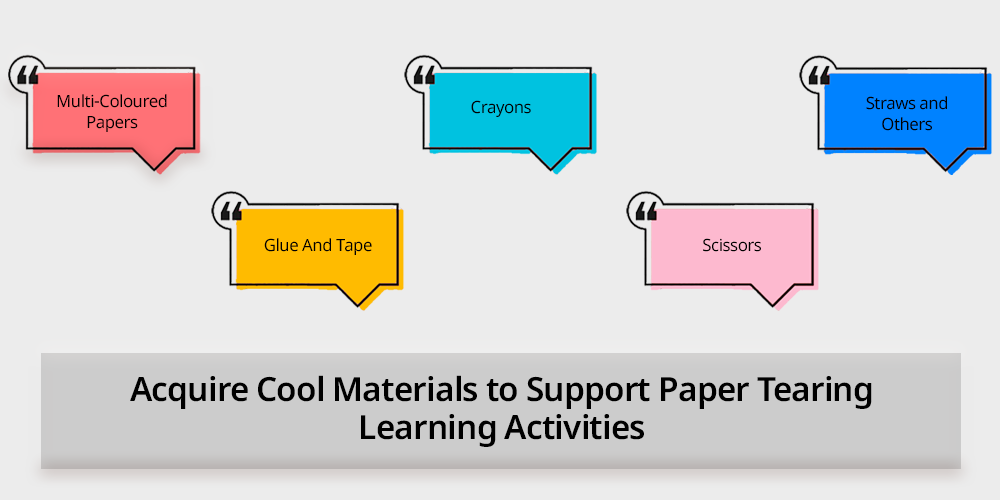
Paper tearing itself presents no challenge yet having suitable materials improves the experience. These following materials would work well:
1. Multi-Coloured Papers
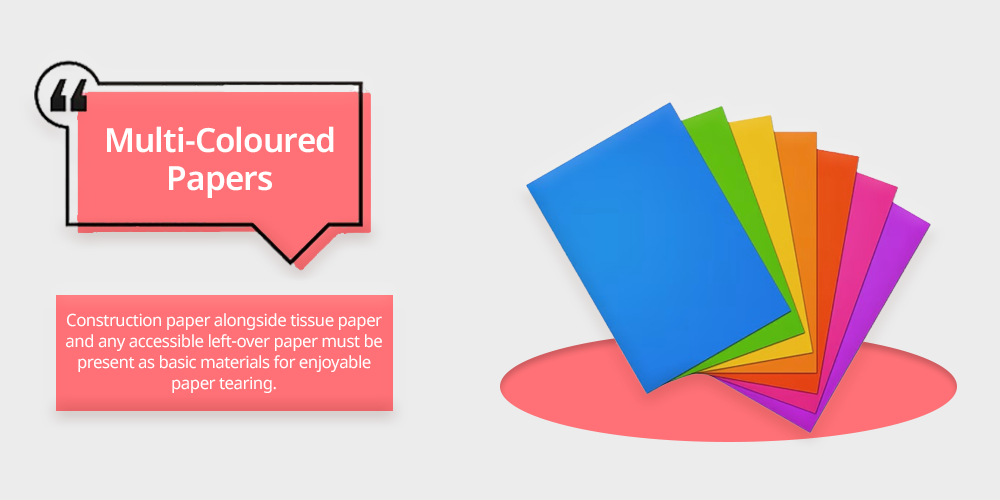
Construction paper alongside tissue paper and any accessible left-over paper must be present as basic materials for enjoyable paper tearing. Different colors serve to create bold designs because their contrasting colors create visual interest.
2. Glue And Tape
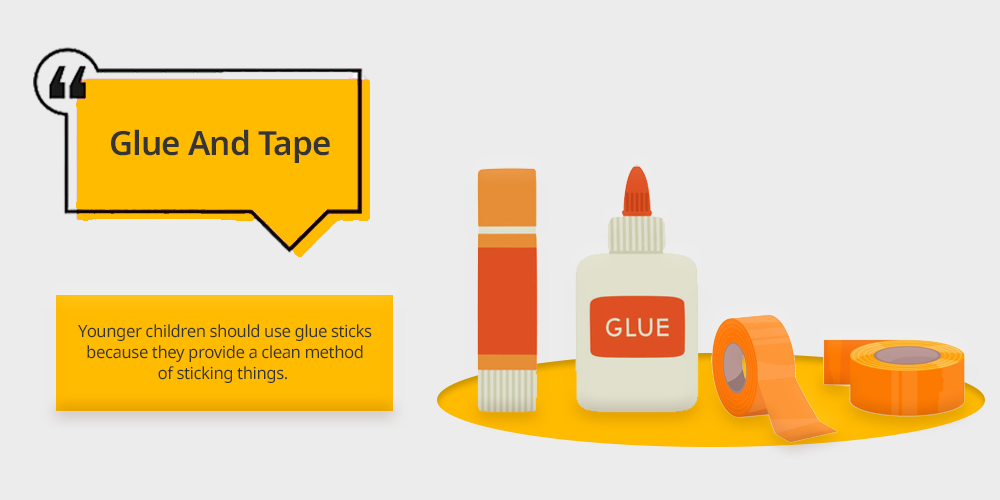
Laying out the torn paper pieces requires a reliable adhesive for successful assembly. Younger children should use glue sticks because they provide a clean method of sticking things.
Tape functions as a temporary repair tool that also maintains elements while users work on their artwork.
3. Crayons
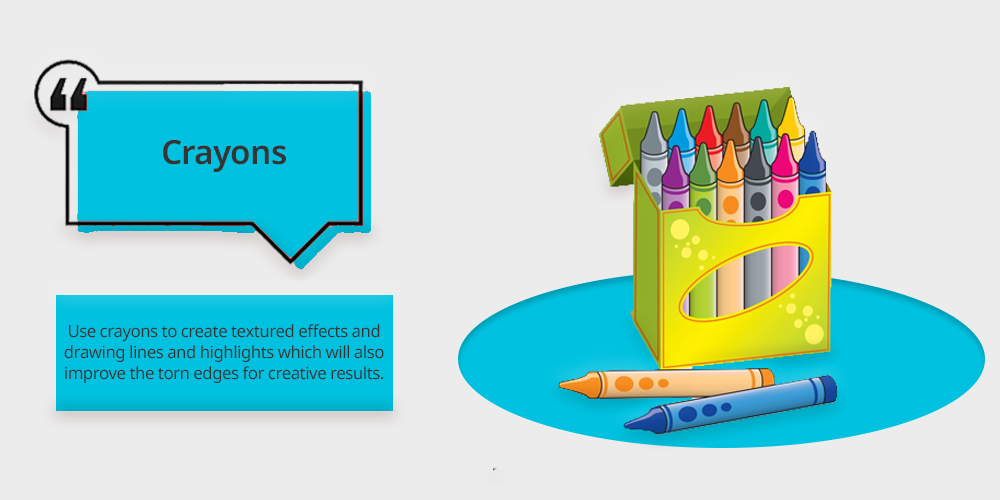
Adding crayons or colored pencils to embellish torn paper sheets will result in better artwork presentation. Use crayons to create textured effects and drawing lines and highlights which will also improve the torn edges for creative results.
4. Scissors
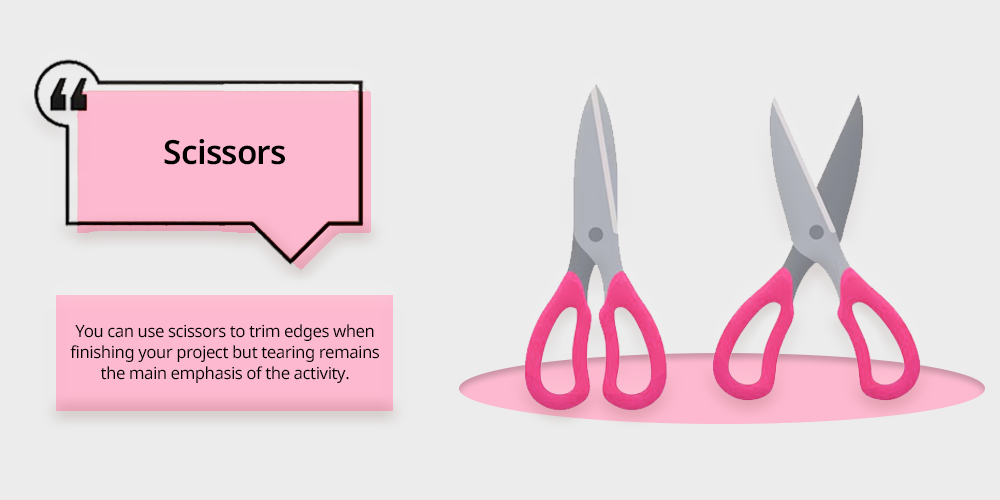
You can use scissors to trim edges when finishing your project but tearing remains the main emphasis of the activity.
5. Straws and Others
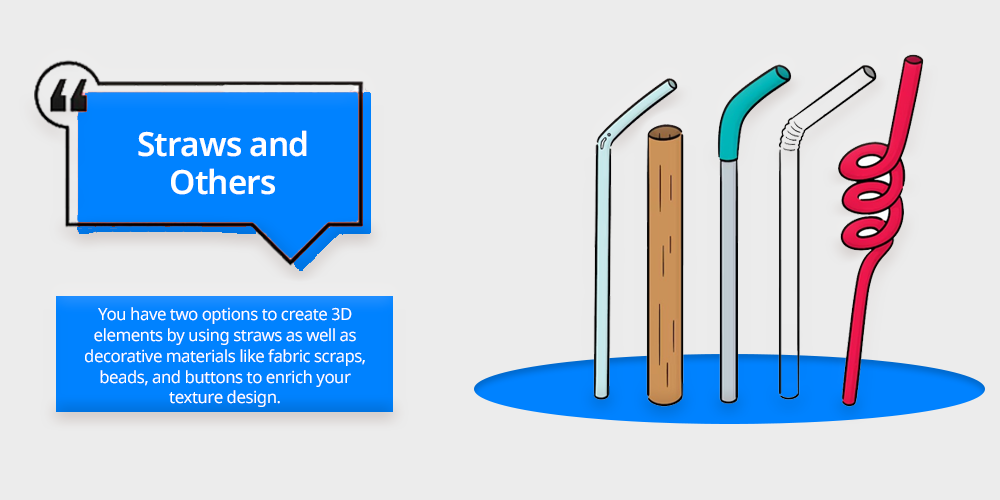
You have two options to create 3D elements by using straws as well as decorative materials like fabric scraps, beads, and buttons to enrich your texture design.
How Do Paper Tearing Activities Projects Help?
1. For Kids
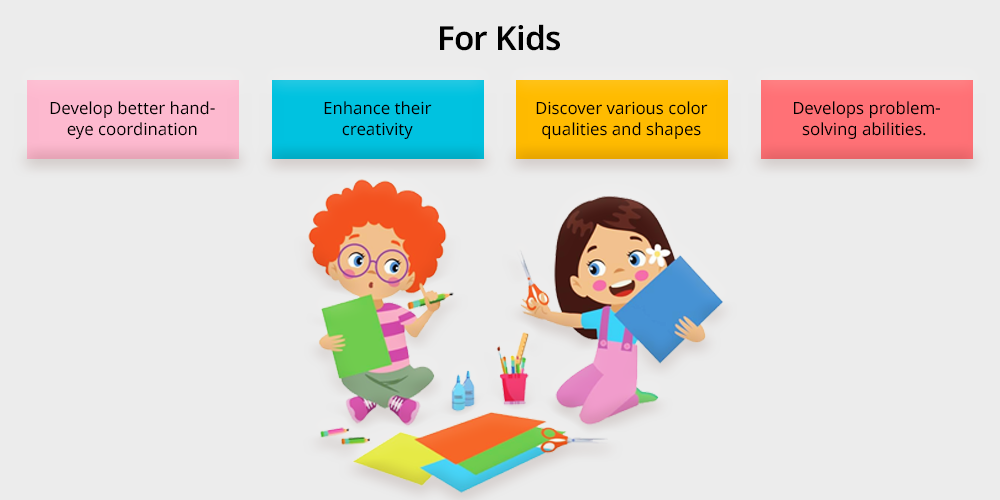
Various developmental advantages can be gained by children through paper tearing activities.
- Children develop better hand-eye coordination through the paper tearing process because the skill requires precise movements.
- Through this activity children can enhance their creativity and show themselves artistically through their creations.
- Working with paper lets children actively discover various color qualities and shapes and textures.
- Paper tearing develops problem-solving abilities. It helps children learn the methods required to assemble torn pieces into a meaningful artwork format.
2. In General
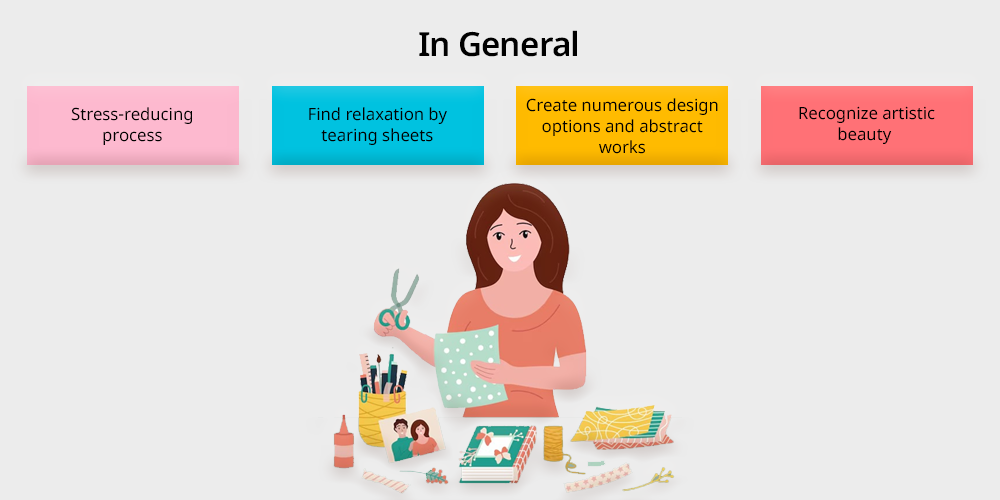
Regardless of their age group people find tearing paper to be both restorative and calming.
- The stress-reducing process functions like mindfulness practices because it guides people toward improved focus.
- People of any age can find relaxation by tearing sheets of paper after work or they can use it to explore creative possibilities.
- The act of paper tearing leads people to create numerous design options and abstract works which proves exceptionally relaxing.
- The practice leads people to recognize artistic beauty through basic materials.
Key Takeaways
Children who engage in paper tearing get the chance to develop creative abilities, fine motor control skills, and artistic self-expression. The practice of paper tearing guides people through educational arts activities and relaxing moments.
Developing collage, animal figures, or abstract creations can even be proved therapeutic. Making wonderful unique art pieces only requires simple basic materials.
So, what are you waiting for? Just go and grab stuff mentioned above and dive into your own world of creativity along with your kids.


